Where the Creativity of Business Meets Art
Fourth Interview: Advanced Technology x Creativity (Part 1)
2 October 2023
Digest Movie
Okuda: Today, we're honored to have Dr. Masakazu Sugiyama, Director of the Research Center for Advanced Science and Technology (RCAST) at The University of Tokyo. Dr. Sugiyama has been at the forefront of research areas that closely align with our business interests at JERA, including high-efficiency solar power generation, solar-driven hydrogen production, and artificial photosynthesis. As Director of RCAST, he also explores the intersection of science and art and is a vocal advocate for STEAM education. Today, I would like to focus our discussion on the concept of art in a broad sense and our innate creative abilities as humans. Now, I would like to hand it over to Ayako to get the conversation started.
The University of Tokyo’s Research Center for Advanced Science and Technology is a testing ground where experts and researchers from different backgrounds come together. It's always fascinating to hear the harmonies they produce as they resonate with one another. (Sugiyama)
Tanaka: Dr. Sugiyama, could you start by telling us about your research and the projects you’re currently working on at the Research Center for Advanced Science and Technology?
Sugiyama: Sure. The full name is The University of Tokyo Research Center for Advanced Science and Technology, which we call RCAST for short. But it's not clear what the center actually does by the name alone, is it?
Tanaka: Well, just hearing the name, I’m thinking, “Wow, sounds impressive.”
Sugiyama: Hey, I’d say you’re not far off the mark! For context, RCAST is one of 11 research centers at The University of Tokyo, and it’s also the newest, established just 36 years ago. The University of Tokyo was once home to the Institute of Space and Aeronautical Science, the precursor to JAXA. As that institute grew, it eventually spun off from the university, leading to discussions about creating something new in its place. Research institutes are traditionally organized like ensembles that play a single instrument. But the idea behind RCAST was to shift this thinking and form a small, elite orchestra that brings different kinds of instruments together. RCAST gathered the top minds from nearly every faculty, including medicine, engineering, science, law, and economics, among others. You might think of it as an orchestra of eccentric musicians who wouldn't typically play with each other but were nevertheless assembled and asked to perform something together.
Tanaka: In musical terms, it sounds like you would specialize in contemporary classical music.
Sugiyama: Musically speaking, we would tackle anything and everything, not just contemporary. We'll write new compositions, but we’re just as happy to engage with the classics. To continue with the music metaphor, we consider the kinds of “music” the world wants to hear right now and compose accordingly. RCAST is an agile group with around 130 faculty members. When you think about how The University of Tokyo has a few thousand faculty members, you can see that RCAST is a rather small organization. In a large orchestra, individuality can be hard to express, and being too conspicuous might even invite criticism from the conductor. But at RCAST, everyone can easily express their individuality. You see the faces of each performer, but it's never a solo performance. It’s a testing ground where experts from different backgrounds all come together. It's always fascinating to hear the harmonies they produce as they resonate with one another. In other words, RCAST is always shapeshifting. We constantly contemplate what the world currently needs and what it will demand in the future. To put it a little more elegantly, we're a group that's always considering how to use our abilities to navigate the tides of the next era and steer the world in a better direction.
Tanaka: The music analogy made the mission of RCAST much easier for me to understand. Thank you for that. Let me ask what sparked your interest in classical music.
Sugiyama: In school, we had music appreciation classes, and I loved the time we got to spend listening to a variety of classical music. I used to help deliver school announcements as a student in the AV room, where I would secretly play the records that were there. I really enjoyed those moments, and they allowed me to soak up a lot of music and understand it on a much deeper level. I would listen to the NHK Symphony Orchestra on TV, and when I went to university, I started going to classical concerts several times a month since NHK Hall was so close to The University of Tokyo’s Komaba Campus. I just gradually became more and more enthralled by the music.
There’s a certain sensitivity that researchers share, regardless of their field. This ability to deeply understand one another on an emotional level—something akin to a shared intuition—is crucial both in the world of art and in science. (Sugiyama)
Tanaka: It’s fascinating that your love of classical music led you to the realization that art is essential for research and education.
Sugiyama: Well, you've gone straight to the heart of the matter, haven't you? [laughs] RCAST brings together experts from various fields across the university. If we were a restaurant, we wouldn’t specialize in one thing like a curry house or ramen bar. Instead, we’d try to create something more comprehensive, like a makunouchi bento box with its assortment of dishes. This approach was a first within The University of Tokyo, and I imagine it was probably a pioneering effort among Japanese universities at the time. Let me give you another analogy. Medicine is currently undergoing a transformation. Traditionally, treatments were things like herbal remedies that worked for specific diseases, developed from accumulated wisdom based on empirical evidence. Today’s medicine is grounded in chemistry. When carbon, hydrogen, and nitrogen atoms are arranged in intricate ways, they form specific proteins, which can be used as either medicines or poisons. And the reason for why these atoms arrange in particular patterns and adopt different shapes is rooted in the principles of physics. But now, alongside chemistry and physics, information science and AI is playing an ever-larger role in cutting-edge medicine.
If we look at anyone broadly categorized as having a developmental disorder with persistent focus issues, we see they are able to concentrate effectively on their studies when provided with an environment that highlights only the crucial text within a textbook. There is a field of medicine that looks at using these kinds of “barrier-free” techniques to enable various individuals to participate in society. And once these practices are implemented in society and become enshrined as legislation, fields like law and economics start to come into play. So, medicine is no longer limited to fields like biology or chemistry.
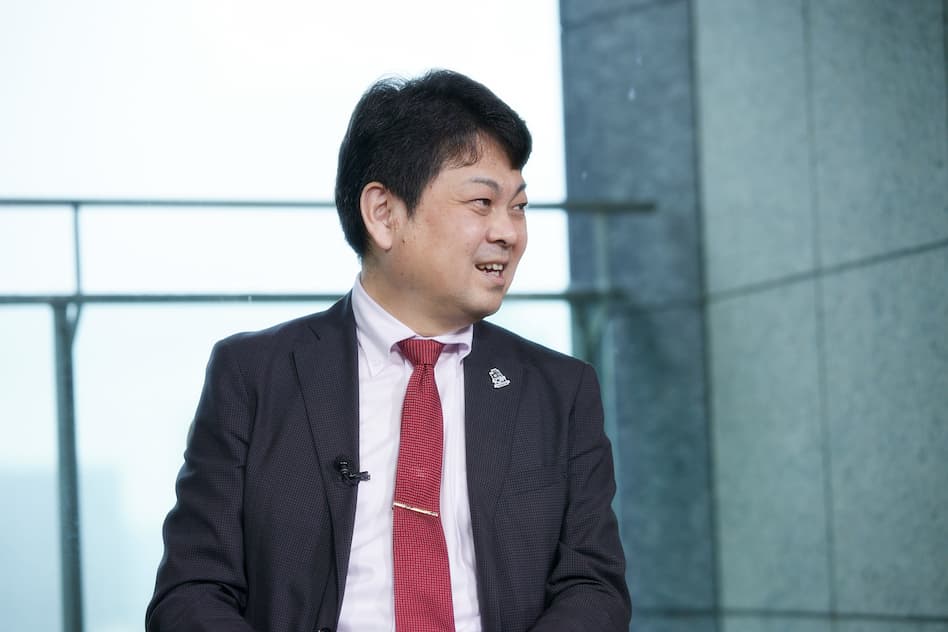
The role of the director and other members of RCAST is to encourage creativity by connecting and facilitating conversations between a diverse range of individuals.
When we think about what makes someone seem “impressive” or why certain things they do feel “exciting,” I believe it's not so much about logic but rather intuition. The complex environment of RCAST makes plain, in a profound way, the importance of communication that goes beyond mere logic. While I'm not the conductor of an orchestra, I do know that conductors don’t need to be able to play every instrument. Rather, they communicate through feeling as they envision what each player or singer should be doing. This shared emotional intuition is a crucial element in both the worlds of art and science. To bring this full circle, my love for classical music probably stems from a feeling I had when solving equations or writing papers, this innate feeling that there had to be something more to it. It was as if I was instinctively seeking something that moved my soul. That’s something that continues to influence me today.
Tanaka: Hearing your analogies and reflections, I’m genuinely impressed by your flexible way of thinking. I also gather that many at RCAST share a similarly adaptive mindset. While they may have one specialization, they realize that new horizons can emerge through collaborations with people from different backgrounds. I imagine the presence or absence of such imagination might determine whether someone moves forward or becomes stagnant. Drawing from your classical music analogy, I imagine that the director of RCAST needs to be less of a conductor and more of a concertmaster, the first chair violinist who leads an orchestra, second only to the conductor. It's remarkable how one person can unify an orchestra made up of so many different instruments and players. And hearing that there is someone at RCAST playing a role just like that, I couldn't help but nod in agreement.
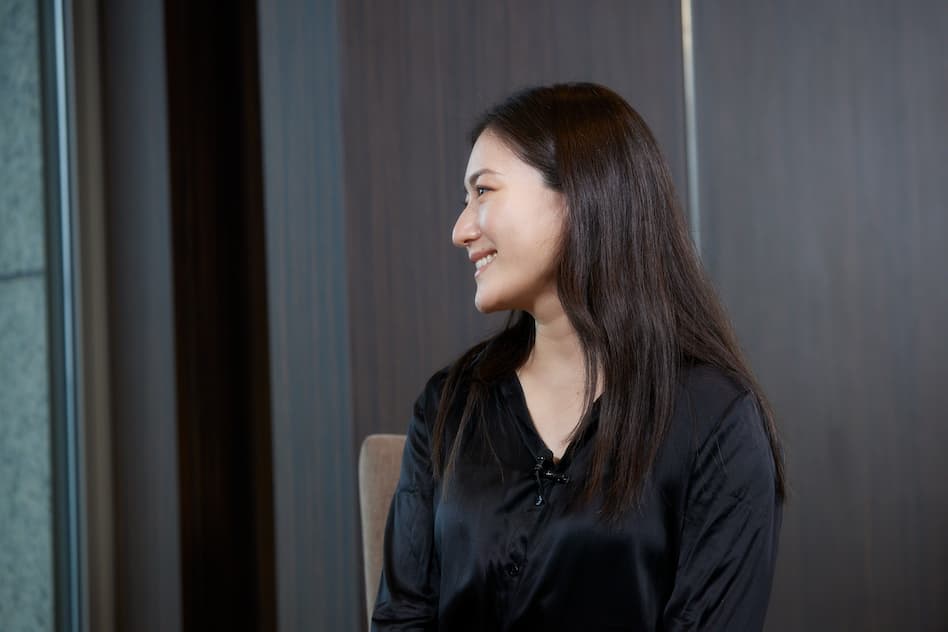
The fact that burning fossil fuels would contribute to global warming is something that should have been understood from a scientific standpoint long ago. Yet, only recently has the collective imagination grasped this reality. That’s why it’s essential for scientists to cherish their sensibilities. (Sugiyama)
Sugiyama: That’s nice to hear. We're still experimenting to see what works, but I hope that this direction will become a defining feature of our work at RCAST. As you mentioned, the act of imagining together, bouncing ideas off each other, and enjoying the resulting harmony isn't just a skill unique to musicians, it's something that’s unconsciously practiced across various sectors.
I mainly work in the energy sector, and the industry once operated under the notion that everyone would be content as long as there was somewhere to extract oil and gas, and it could be procured securely and cheaply. The fact that burning fossil fuels would release CO2 and, in turn, contribute to global warming is something that should have been understood from a scientific standpoint long ago. Yet, only recently has the collective imagination grasped this reality. Recognizing that the activities that enrich our lives today result in by-products that endanger our future has complicated the energy debate. For instance, if we clear mountains to make space for large-scale renewable energy projects like solar or wind farms, we are faced with scenarios with countless intricacies, like disrupting the ecosystems of the flora and fauna residing there. When we consider these inextricably intertwined challenges on a planetary level, maintaining harmony is crucial. That’s why, as I mentioned earlier, it’s not just artists or musicians who should have a monopoly on emotional depth—scientists, too, must cherish their sensibilities.
Okuda: Last time when I had the opportunity to converse with Mr. Seiichiro Yonekura, we discussed how imagination and creativity are essential for creating new value. It's remarkably similar to what you're saying. Another key point is how people truly connect through shared sensibilities. The members of RCAST each have their own areas of expertise, but they are bound by their passion and shared sensibilities, which drives them to create something new together. Would I be correct in saying you see a relationship between art and science?
Sugiyama: Absolutely. We are currently revisiting and discussing what the “advanced” in RCAST truly signifies. It's not merely about being on the cutting edge in a literal sense, nor is it about doing something that no one else is doing. I believe we should define “advanced” as a movement that leads to innovation. In other words, the “advanced” in our name is about exploring areas where solutions are needed but have yet to be found. And to do that, imagination and creativity are absolutely essential.
Take the CO2 issue I mentioned earlier as an example. The ability to consider the potential adverse effects that might arise in the future, which are currently unseen, is also a part of imagination. I believe sensibility becomes vital when it comes to that kind of imaginative ability. There are different ways to enrich this sensibility, and for me, listening to music serves as a form of training. It's not that I necessarily listen to music with this purpose in mind, but I think it just ends up that way. From this perspective, at RCAST, the most important thing for us is to see each other’s work and to be inspired by it. And the more often we share experiences, the more dynamic our organization becomes. We just touched on the topic of concertmasters a moment ago, and within RCAST, we're fortunate enough to have direct access to the insights of Kaoru Kondo, Project Professor at The University of Tokyo and the concertmaster of the Tokyo Philharmonic Orchestra. To enrich your sensibilities, it's crucial to place yourself in an environment that nurtures them. To that end, RCAST holds the Koyasan Conference at the Koyasan temple complex in the mountains of Wakayama, a sacred place that boasts a 1,200-year history. Last year, we had the privilege of listening to Prof. Kondo and his colleagues give a late-night performance of a Tchaikovsky string quartet in a Koyasan graveyard.
Tanaka: Wow, Tchaikovsky?
Sugiyama: That's right, they played Tchaikovsky in a Koyasan graveyard at night. We kept the attendees in the dark about what was going to happen, guiding them through complete darkness with only candles to light the way. As they arrived at the cemetery, Tchaikovsky's music began to pierce the darkness. And to top it off, as the performance concluded, the sky opened up, revealing a breathtaking star-filled sky. It’s the kind of experience that moves you to tears. When you combine different elements in an extraordinary environment, it makes for a unique sensory experience, which can greatly enrich your sensibilities.
Okuda: It reminds me of Ayako’s mono opera, Garasha. She also has a knack for gathering people together through a shared intuition to create something new. It seems to me that these stories have a lot in common. What do you think, Ayako?
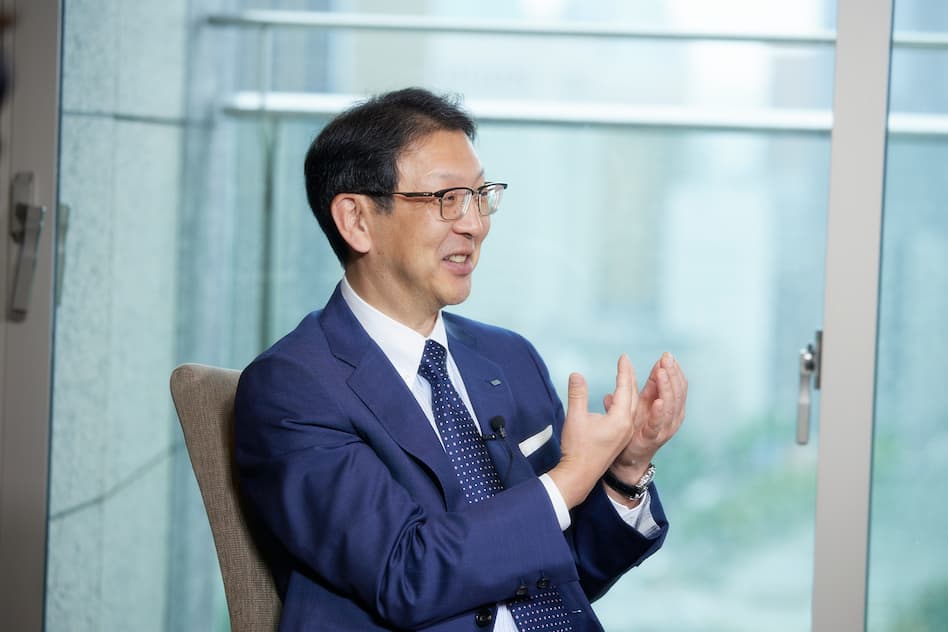
Tanaka: I do notice similarities. Many people might associate classical music with concert halls, but that’s not necessarily the case. While Garasha has been performed in halls and Noh theaters, I personally feel that presenting it outdoors would make for an entirely different performance. Thinking about why that might be, I wonder if the natural materials used in the instruments may resonate uniquely with nature. The performance in the graveyard, which itself is also a part of nature, must have also produced certain sounds unique to that setting. It’s just so fascinating.
We tend to build upon the wisdom of our predecessors and add to it our knowledge of the present. With all the thinking that we do, perhaps we are becoming less receptive to our feelings and intuition. (Sugiyama)
Okuda: I think there's something about being in a special place like Koyasan that clears the mind. While I might be known as the CEO of JERA elsewhere, there, I shed that title and become just another face in the crowd. I think other participants of the Koyasan Conference must have felt something similar. Sensibilities likely resonate more easily with one another in this state of mind, and the natural surroundings likely amplify what we're able to feel, making people more susceptible to a multitude of sensations.
Sugiyama: It’s immensely important to be able to resonate with one another. You have both mentioned this. When you look at the world through the lens of quantum mechanics, everything is a vibration.
Tanaka: Everything is a vibration?
Sugiyama: Yes, that's right. The idea is that the atoms and molecules that we’re made of are ultimately formed through the superposition of vibrations and waves. It’s a bit of a change of topic, but the resonance between waves is a physical phenomenon, so waves of the same frequency can intensify each other when their phases align, and conversely, they can cancel each other out when their phases are inverted. The essence of people “resonating” with one another might have to do with the fact that our very existence is wave-like. And you’re right about Koyasan. Being there sharpens one's senses. It's the sensation that Mr. Okuda mentioned, where you can shed your titles and affiliations. Normally, we’re weighed down when we have to think about things like these. “Thinking” is crucial, and in our world, it starts with studying arithmetic and science, which then evolves into mathematics, physics, biology, chemistry, and even law. It's a hierarchical structure where we build upon existing knowledge, respecting the wisdom of those who came before while considering how to develop novel ideas. In other words, we tend to expand upon the wisdom of our predecessors and our knowledge of the present. That feels like it’s in a different dimension from this idea of resonating with each other. We often encourage people to “think with an open mind,” but with all the thinking that we do, perhaps we are becoming less receptive to our feelings.
Before I go on stage, I always approach the performance with a feeling of sanctity, as if I'm meditating under a waterfall. When I first started singing in Vienna, I was always told, “Don't think, just feel.” (Tanaka)
Okuda: Ayako, in our previous conversation with Dr. Yonekura, you mentioned that when you approach the works of Beethoven or Mozart, you don't think of them as the works of some great composer but more like some guy you might bump into on the street. Listening to Dr. Sugiyama, I feel like his way of thinking resonates with what you said in that conversation. If you didn’t approach the music with that attitude, you’d be bogged down by extraneous information and end up overthinking everything before you could feel anything. And overthinking can constrain you and make it harder to create something new.
Something else Ayako said left an impression on me. She mentioned how before singing on stage, she tries to empty herself and simply let the music flow through her. Artistic sensibility, similar to the point made earlier about wavelengths, isn't something you consciously think about. That's one important point, isn't it?
Sugiyama: When I'm commissioned to write an article or essay, I often feel that what I want to convey doesn't emerge if I’m just constantly writing. Rather, it suddenly descends upon me.
Tanaka: Back to the topic of Koyasan, I believe that when inspiration doesn't strike, it’s because there's some kind of distraction. When you talked about Koyasan and the heightening of the senses, it reminded me of how I feel before I go on stage. I always approach the performance with a feeling of sanctity, as if I'm meditating under a waterfall. And when I first started training as a singer in Vienna, I was always told, “Don't think, just feel.” While it's okay to contemplate the music or the lyrics or be conscious of Mozart in what you’re playing, our conversation has reminded me that those thoughts can become distractions that prevent you from truly feeling the music for what it really is. It's been a while since I reflected on that.
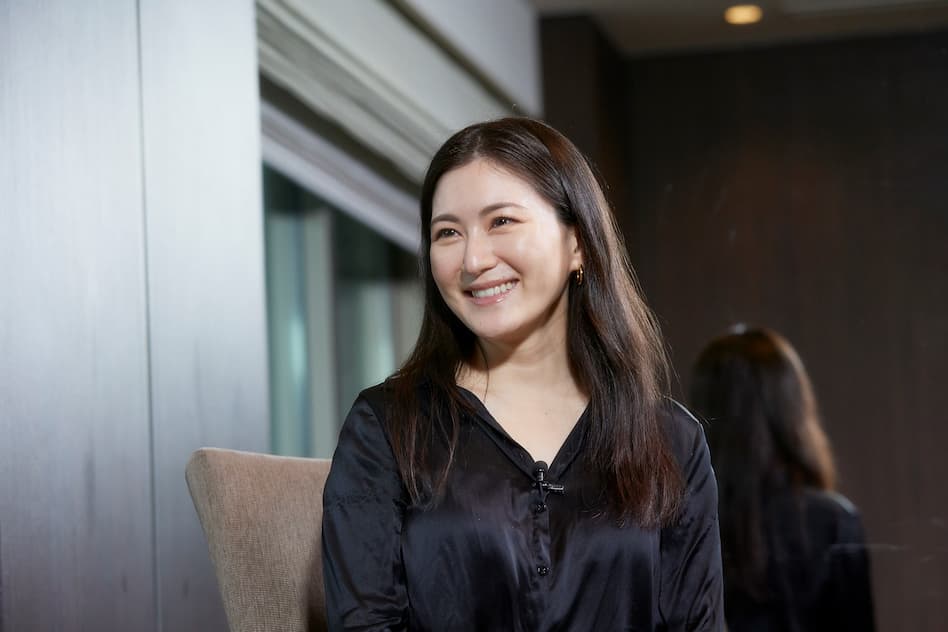
It doesn't mean that you don’t need to think. I imagine it's about constantly shifting between the realms of emotional intuition and logical reasoning to create something new. (Okuda)
Okuda: It’s very interesting how you say that you don’t need to think. There must be something that Ayako can feel precisely because she has sheet music in front of her and knows how to interpret it. That’s an intricate relationship, and it reminds me of Einstein, who was a violinist and a Mozart scholar. There are stories about how he often thought in terms of music. We are constrained by the frameworks of language and equations, so when we communicate, we are unable to transcend the limitations of linguistic reasoning. When trying to express something beyond its capacity, perhaps only music suffices. We can imagine Einstein playing his violin, contemplating his work through music. And I suspect that his theory of relativity emerged from these musical sensibilities. But to explain his theory to others, he couldn't use music alone. He had to return to the world of logic and attempt to put it into equations. I can't help but think this was the dynamic at play. I imagine it's about constantly shifting between the realms of emotional intuition and logical reasoning to create something new.
Sugiyama: Words, equations, sheet music—these all emerged as communication tools within a shared conceptual framework. There’s no doubt that any framework has its limitations, and it is within its confines that we return to articulate what we have sensed beyond them. It's about how those individuals who can feel deeply are able to convey the new worlds they've ventured into, figuring out how to distill those experiences into words, equations, or music. Take Kukai, for example, the founder of Koyasan, who is said to have attained enlightenment. His teachings had to be written down to share his insights, however abstract they may have been. Whether those words convey precisely what he intended is unclear, and there might be a certain ambiguity within them. That room for interpretation could, in turn, pave the way for further developments.
Historically, art has existed alongside academic pursuits ever since ancient Greece. Together, they function as dual pillars within the framework of the liberal arts. (Sugiyama)
Okuda: I think training is needed in order to enhance one's receptivity. To truly feel, it's essential to create numerous opportunities to listen to the messages of those seeking to inspire. To that end, educational opportunities are paramount. However, current formal education doesn't emphasize that kind of experiential learning. Take music classes, for instance. Students often end up merely learning how to play harmonicas, flutes, or melodicas. Art classes focus on drawing or carving, which makes these subjects feel more like designated practice time. I think there should be a greater emphasis on experiencing and appreciating art. Consider the experience of looking at an abstract painting—you might not understand it, but you can still feel its incredible energy. Having the sensibility to understand what makes something good can lead to increased visits to art museums and concerts. I believe this, in turn, has a synergistic effect, leading to the development of talented musicians and artists. By repeating such experiences, we will gradually be able to balance our cognitive and emotional capacities. I feel that the current balance in Japan is somewhat skewed.
Sugiyama: Liberal arts education is what’s missing from Japanese university education. There’s recently been a shift to pursuing specialized education right from year one. American universities, in contrast, consistently maintain a foundational liberal arts program, which invariably includes an arts department. At its core, I believe that higher education should focus on developing logical thinking while nurturing students’ capacity to feel and perceive. Historically, art has existed alongside academic pursuits ever since ancient Greece. Together, they function as dual pillars within the framework of the liberal arts. In Japan, as I mentioned earlier, universities that emphasize liberal arts and those that focus on the fine arts are distinctly separate, a system quite unique when looking at education around the globe.
I believe that STEAM education is about enhancing students’ sensibilities through experience. How we approach that is a crucial challenge going forward. (Sugiyama)
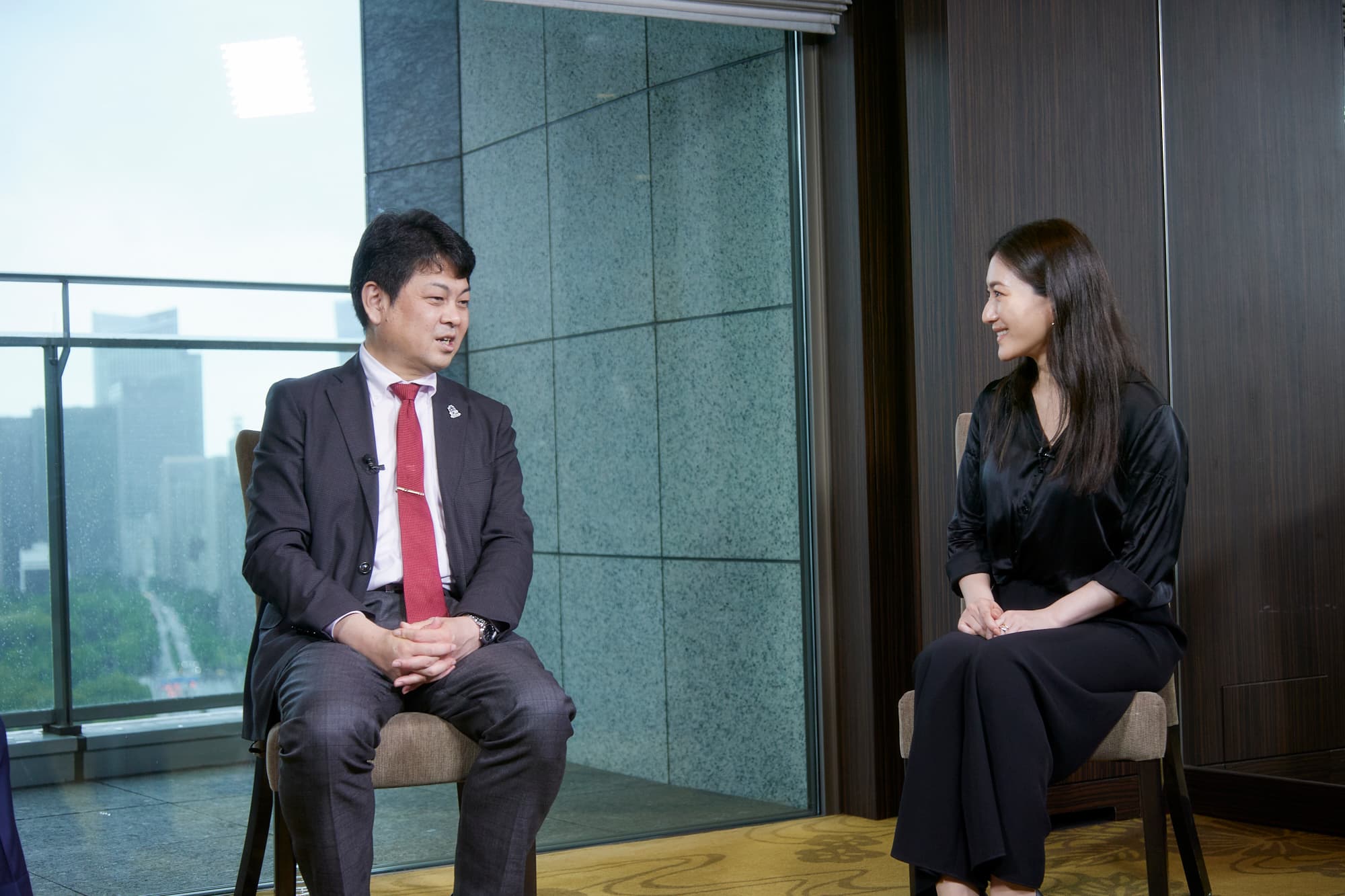
Sugiyama: Recent STEM education has focused on equipping young minds with knowledge of science, technology, engineering, and mathematics—essentially the technical and scientific disciplines—from an early age. The approach seeks to offer young people opportunities to interact with top researchers with the intent of fostering world leaders with a strong technical foundation. However, we now also have STEAM education, which aims to incorporate “art” as well, though I've observed numerous educators struggling with the question, “What does this ‘A’ stand for exactly?” Some contend that the ‘A’ represents the liberal arts, encompassing philosophy, literature, and the like. But when you delve into the essence of what art truly signifies, what it fundamentally embodies, I personally believe the ‘A’ stands for the “ability to feel.” Without thoroughly developing sensitivity alongside scientific education, I don’t know if it’s truly feasible to achieve the desired outcomes.
I view STEAM education as a grand experiment in and of itself. In terms of where it’s headed, the question is how we enhance our capacity to feel, as Mr. Okuda mentioned. It's crucial to have an open attitude that embraces what others are trying to convey. I believe that STEAM education is about enhancing students’ sensibilities through a range of experiences. How we approach that is a crucial challenge going forward. The solutions won't come easily, and there may be more than one right answer. The “A” in STEAM may very well represent a spiritual goal. We want to convey to younger generations what we believe is important, but that requires more than just communicating within the frameworks we’ve discussed—it's also about how the passion of the person trying to express something is conveyed. The more the recipient is able to absorb, the better the sender’s ability to express themselves as well.
At a recent roundtable on STEAM education at RCAST, we invited musicians and high school music students to participate, and I was struck by something one of the high schoolers said. I’m paraphrasing, but they said something to the effect of, “By actively engaging in art, we can express ourselves more effectively and more freely. Those who can express themselves are also able to accept the expressions of others, and that leads to diversity.” This struck me as precisely what the “A” in STEAM education is aiming for. The challenge now is how to implement that or how to shift society in that direction.
(To be continued)
Teaser Movie
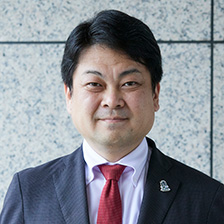
Director, Research Center for Advanced Science and Technology, The University of Tokyo
Masakazu Sugiyama, Ph.D.
Born in 1972, Sugiyama is an expert in energy systems. In 2000, he received a Ph.D. in Chemical System Engineering from the Department of Chemical System Engineering, School of Engineering, The University of Tokyo. In 2016, he was appointed as a professor at The University of Tokyo's School of Engineering, and since 2017, he has served as a professor at The University of Tokyo's Research Center for Advanced Science and Technology, where he was appointed director in April 2022.
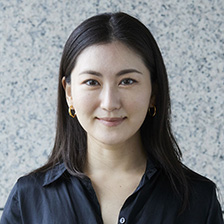
Ayako Tanaka
Soprano singer
President, Japan Association for Music Education Program
At the age of 18, Tanaka traveled to Vienna alone to study. At 22, she made her debut at the Stadttheater Bern in Switzerland, becoming the youngest soloist ever in the theater and the first Japanese person to perform there. Since then, she has performed in Vienna, London, Paris, Buenos Aires, and many other cities worldwide. Tanaka won “Best World Premiere Piece” by the Argentine Music Critic Association for her performance of Esteban Benzecry's “The 5 Cycle Songs for Coloratura Soprano and Orchestra" in Buenos Aires. The album received five stars from the BBC Music Magazine, the world's best-selling classical music magazine.
Tanaka is also engaged in giving back to society through activities such as the SCL International Youth Music Festival held in Vienna with the support of UNESCO and the Austrian government to assist young performers, as well as the National Youth Orchestra of Argentina, which was established with the support of the Argentine government to provide education to young people of various backgrounds and family situations through music.
Tanaka was named one of Newsweek's "100 Most Respected Japanese in the World" in 2019. She sang the Japanese national anthem on October 22 at the opening ceremony of the SMBC Nippon Series 2022.
Born in Kyoto, Tanaka lives and works in Vienna.
RELATED STORIES
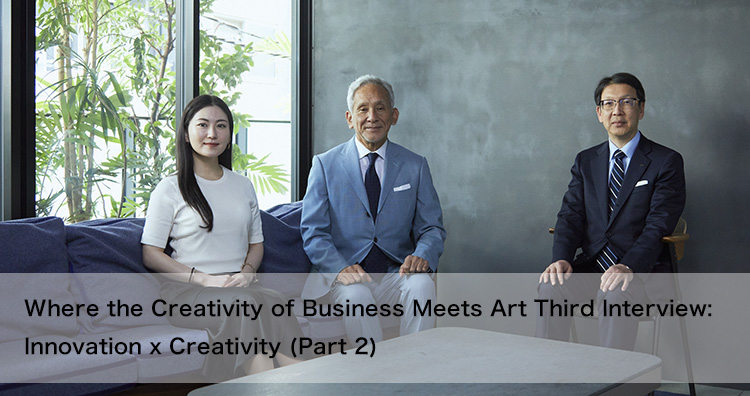
Where the Creativity of Business Meets Art Third Interview: Innovation x Creativity (Part 2)
All human beings become innovators the moment they're born. You should take a stab at doing something interesting, …

Where the Creativity of Business Meets Art Second Interview: Education x Creativity (Part 1)
Today marks the first time we’re doing a three-person interview. We are joined by Mr. Kaito Miwa, CEO and co-founder of …

Where the Creativity of Business Meets Art Second Interview: Education x Creativity (Part 2)
Recently, I've developed a new presentation style, where I seek to connect with the audience by openly sharing my weaknesses

